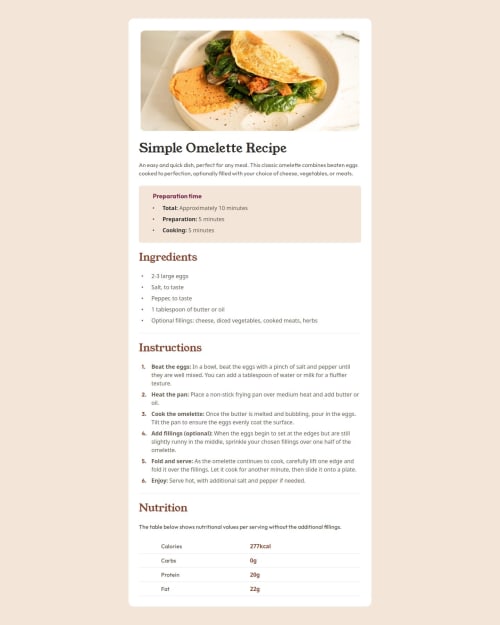Responsive Menu Card

Solution retrospective
Card Menu
Plz Need Feedback,in this solution i tried to made a semantic structure and clean code
🐱🏍
(❁´◡❁)(❁´◡❁)(❁´◡`❁)
Please log in to post a comment
Log in with GitHubCommunity feedback
- @petritnuredini
Congratulations on completing your project! It's impressive to see your dedication and attention to detail in building a visually appealing and structured application. Here are some short recommendations for further enhancement:
-
Component Structure:
- Reusability: Ensure your components like
SectionOne,SectionTwo, etc., are reusable and can adapt to different content or layouts.
- Reusability: Ensure your components like
-
CSS Best Practices:
- Consistent Naming: Keep CSS class names consistent and descriptive for easy understanding and maintenance.
- Responsive Design: Ensure your application is responsive across different devices. Consider using flexible units like
remfor font sizes and margins.
-
Accessibility:
- Semantic HTML: Utilize more semantic HTML elements for better accessibility and SEO.
- Alt Text: Ensure all images have descriptive alt text for screen readers.
-
Code Organization:
- Modularity: Break down large components into smaller, manageable pieces for better readability and maintainability.
-
Performance:
- Optimize Assets: Ensure images and SVGs are optimized for web use to improve load times.
-
References for Learning:
- CSS Techniques: CSS Tricks
- React Best Practices: React Documentation
Keep up the great work and continue to challenge yourself with new projects! Each project is an opportunity to learn and grow. Your progress is impressive, and I'm excited to see what you'll create next!
Marked as helpful -
Join our Discord community
Join thousands of Frontend Mentor community members taking the challenges, sharing resources, helping each other, and chatting about all things front-end!
Join our Discord